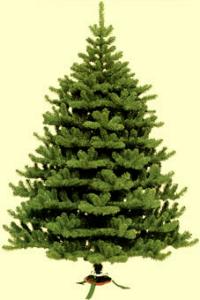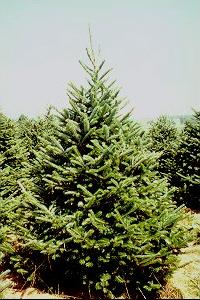|
The
Environmental Load Of Christmas Trees
 A natural
tree, grown in natural surroundings, is five times more
environmentally compatible than a plastic tree. Such are the findings of a
Swedish study undertaken by the Institute for Air and Environment in
Gothenburg. A natural
tree, grown in natural surroundings, is five times more
environmentally compatible than a plastic tree. Such are the findings of a
Swedish study undertaken by the Institute for Air and Environment in
Gothenburg.
The study is based on an analysis of the life cycle of natural trees
and plastic trees (artificial vs. christmas trees). But that the
difference between the two is as pronounced as the study shows, may
astound most.
The plastic tree used in the study was bought at one of the Swedish
capital's exclusive warehouses: a beautiful and apparently natural fir,
made of PVC-plastic and metal, with a convincingly attractive green color.
The plastic tree was 20 kg (44 lbs). It carried a 10-year guarantee. The
artificial tree was made in Hong Kong, then transported the 20,000 km
(12,400 miles) to Stockholm by ship.
 The natural tree of the study was
10-years old, 2m (6 1/2 feet) high
and weighed 10 kg (22 lbs), and arrived on the back of a truck. The natural tree of the study was
10-years old, 2m (6 1/2 feet) high
and weighed 10 kg (22 lbs), and arrived on the back of a truck.
The 10-year guarantee on the plastic tree gives the artificial product
a great advantage. It means that the strain the natural tree exerts on the
environment is multiplied by 10 before the results have been compared.
In practice one would hardly use the same tree 10 years in a row -
plastic tree or not, regardless of the guarantee. If one, for example,
sets the actual life span of the plastic tree at five or six years, the
environmental load would of course, be much greater in relation to the
real Christmas tree.
|
